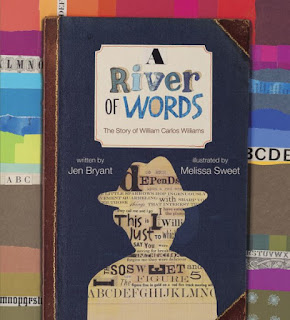Feed Your Mind: A Story of August Wilson by Jen Bryant, illustrated by Cannaday Chapman
Feed Your Mind: A Story of August Wilson
by Jen Bryant,
illustrated by Cannaday Chapman
Review Copy from Abrams Books
Great American playwright August Wilson may not seem like an immediate choice for a picture book biography for young readers. Yet, with Feed Your Mind: A Story of August Wilson, Jen Bryant, author of many award winning biographies for young readers featuring artists, poets, innovators and inventors, presents an insightful look at a great writer who, in the face of racism and discrimination, became a Tony and two-time Pulitzer award winning playwright. Reading and books paved a path forward for Wilson, while school and racism held him back. Wilson made his own path, observing his community, taking inspiration from other artists and patiently growing his poetry into plays.
Bryant writes in a free-verse, play form, dividing her book into two acts. The first act begins in Pittsburgh, 1945, where Wilson devours books, especially the ones he discovers on the at the Hazelwood Library on the shelf labeled "Negro Books." At the same time Wilson is immersing himself in the works of Langston Hughes, Ralph Ellison, and Richard Wright, racism is repeatedly impacting his education and family life. Bricks are thrown through the windows of his home, while student abuse drives Wilson from Central Catholic High School to Gladstone Public High. There, excited again about learning, his history teacher insists Wilson's twenty-page essay, "Napoleon's Will to Power," has been plagiarized.
Act Two finds Wilson spending his days at the library instead of high school. It is there that he finds "a mother lode of black literature" that will inspire, shape and guide Wilson, giving him hope and direction. Bryant does a stellar job showing readers the creative influences and inspirations along with the patience, practice and observation that moved Wilson from poet to playwright. I especially appreciate how Bryant makes the connection for readers between Wilson's creative process, the bits and pieces of dialogue and scenes that he scatters all over the floor before organizing into a play - the "collage of human voices" - and the work of painter Romare Beardon, who created his own inspirational, enormous collages.
The final poem of Bryant's book is titled, "Cycle." Wilson is two plays into his ten play "Pittsburgh Cycle," each one set in a different decade of the twentieth century, and each one "a map of the black experience in America." Back matter includes an author's note, a time line, bibliography and list of plays by Wilson that gives readers a view of the scope of Wilson's work, life and contribution to America.
More picture book biographies by Jen Bryant









